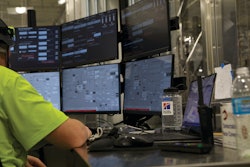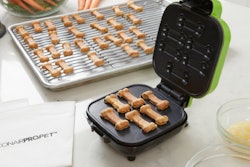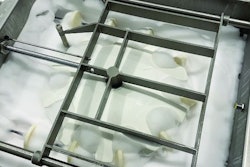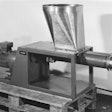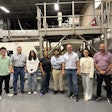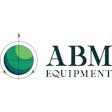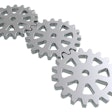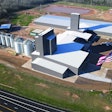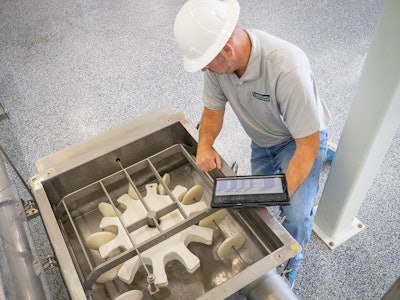
Pet food processors often rely on tubular drag cable conveyors to move sensitive materials and powders, so it's important to properly design, install and proactively maintain these systems to minimize production downtime and maximize longevity.
In today’s fast-paced pet food processing environment, it's a standard practice to run conveyors until something breaks or needs to be repaired, which can lead to significant unnecessary downtime.
“Processors traditionally have relied on third parties such as local millwrights to install and maintain conveyors," said Fernando Mejia, director of Product Life Cycle Management & Aftermarket for Automated Handling Solutions (AHS). "These third parties may not have access to technical specifications or have not had the opportunity to read the manual and can therefore be unaware of system acceptable specifications and best practices. This can result in not only excessive downtime and maintenance, but also costly repairs and even premature system replacement."
AHS brings together two companies, Cablevey Conveyors and Spiroflow, to provide customers with a specialized handling and automation product portfolio for mission-critical applications.
For pet food processors, instead of reacting to individual problems as they arise, a more effective approach is to implement total preventative maintenance (TPM) for conveyors. This involves ongoing service and engineering support, resulting in reduced downtime and lower operations and maintenance (O&M) costs.
“We are here to assist customers reducing their total O&M costs," said Mejia. "We are looking forward to partnering with our customers to inspect their systems, review layouts, and formulate a total preventative maintenance plan based on their needs. Failing in this, customers may continue to replace parts prematurely with all the needless downtime this involves.
According to Mejia, the goal of a TPM program is to work with our customers to maximize the output of their conveyors and extend the lifespan of their critical capital equipment.
 The goal of a total preventative maintenance (TPM) program is to maximize the output of pet food conveyors and extend the lifespan of critical capital equipment.Automated Handling Solutions
The goal of a total preventative maintenance (TPM) program is to maximize the output of pet food conveyors and extend the lifespan of critical capital equipment.Automated Handling Solutions
The value of prevention
With the sophistication of state-of-the-art conveyors, proactive, preventative, and predictive maintenance is an effective strategy. This is the case with tubular drag cable conveyors, which gently move product through a sealed tube using a coated, flexible stainless-steel drag cable pulled through on a loop. Solid circular discs (flights) are attached to the cable, which propel the product through the tube without the use of air.
While it is possible to use third parties to install the systems and in-house maintenance teams to maintain them, there are considerable advantages to involving an OEM Supervisor, since they possess unparalleled training and expertise on the system. OEM technicians typically have years of experience exclusively servicing and troubleshooting tubular drag style conveyors. These technicians have conducted hundreds of inspections in plants worldwide that run any material imaginable, including pet food.
“Many recurring problems stem from incorrect installation, which can involve improperly positioning the conveyor’s hangers, excessive tension, misaligning tubing, leaving gaps, or insufficient supports," said Mejia. "All these defects can generate friction, noise, and prematurely wear parts, requiring replacement."
An OEM can also proactively recommend the appropriate spare parts kits or high wear parts such as cables, connectors or sweeps that are known to have shorter lifecycles. This method encompasses assessing both the condition and usage of the conveyor, while also leveraging predictive data to efficiently resolve numerous issues before any downtime occurs.
“As the OEM, we can analyze system usage as well as component wear and lifecycle data to accurately predict when vital parts will likely need to be replaced and have them replaced before something breaks,” said Mejia. “The more a processor adheres to this type of total preventative maintenance schedule, the more likely the conveyors will provide optimal service throughout their anticipated lifespan."
 To optimize production and extend the lifespan of tubular drag cable conveyors, it's best to involve an expert OEM for total preventive maintenance.Automated Handling Solutions
To optimize production and extend the lifespan of tubular drag cable conveyors, it's best to involve an expert OEM for total preventive maintenance.Automated Handling Solutions
Comprehensive annual inspections recommended
A comprehensive annual inspection of the conveyor system by the OEM is highly recommended. With the shortage of skilled mechanics combined with high employee turnover, we are here to perform in-depth inspections and recommended maintenance. This solution is mainly targeted to processors that have one or multiple tubular drag conveyors running constantly throughout the year.
According to Mejia, detecting problems such as gaps or misalignments requires camera inspection. The annual inspection also assesses the conveyor’s tubes, walls, sweeps, connectors, input, and output. In addition, cables should be checked for integrity and tension, discs and sprockets for wear, and joints should be validated.
During the inspection process, the OEM can recalibrate or replace any components outside of system specifications. Service technicians also advise on the use of any available update or retrofit kits that can further facilitate increased output.
While the frequency of the annual service visits depends on the system application and environment conditions, several factors can help determine the optimal frequency. As a partial list, this can include the type of conveyor systems in the facility, system length and complexity, average daily use, environment conditions and the type of material conveyed. When these factors are analyzed, a service visit might be scheduled once or twice per year, as the situation warrants.
Many pet food processors can benefit greatly from collaborating with a knowledgeable conveyor OEM to establish a comprehensive preventative maintenance plan. For instance, Mejia highlights the case of a processor that aimed to revamp their maintenance strategy.
This customer had expanded operations and was about to double their capacity. Although their conveyors were running well, they didn’t want to risk unnecessary downtime. “So, they told us, ‘We would like to avoid the ‘break/fix’ approach and move forward to a total preventative maintenance culture,’” said Mejia. “I was thrilled to hear that our goal and vision were aligned.”
To meet the demands of the pet food industry and address the requested services, AHS is increasing their service capacity to assist processors in proactively mitigating issues and minimizing downtime. The OEM will be establishing a service hub and parts depot on the West Coast, enabling localization, onsite inspections, and comprehensive preventive maintenance by qualified technicians with a local presence.
The OEM is now offering long term service agreements that will comprehensively cover all aspects of maintenance, so the pet food processor can focus on their core business with confidence in the performance of their conveyors.
Del Williams is a technical writer based in Torrance, California.



